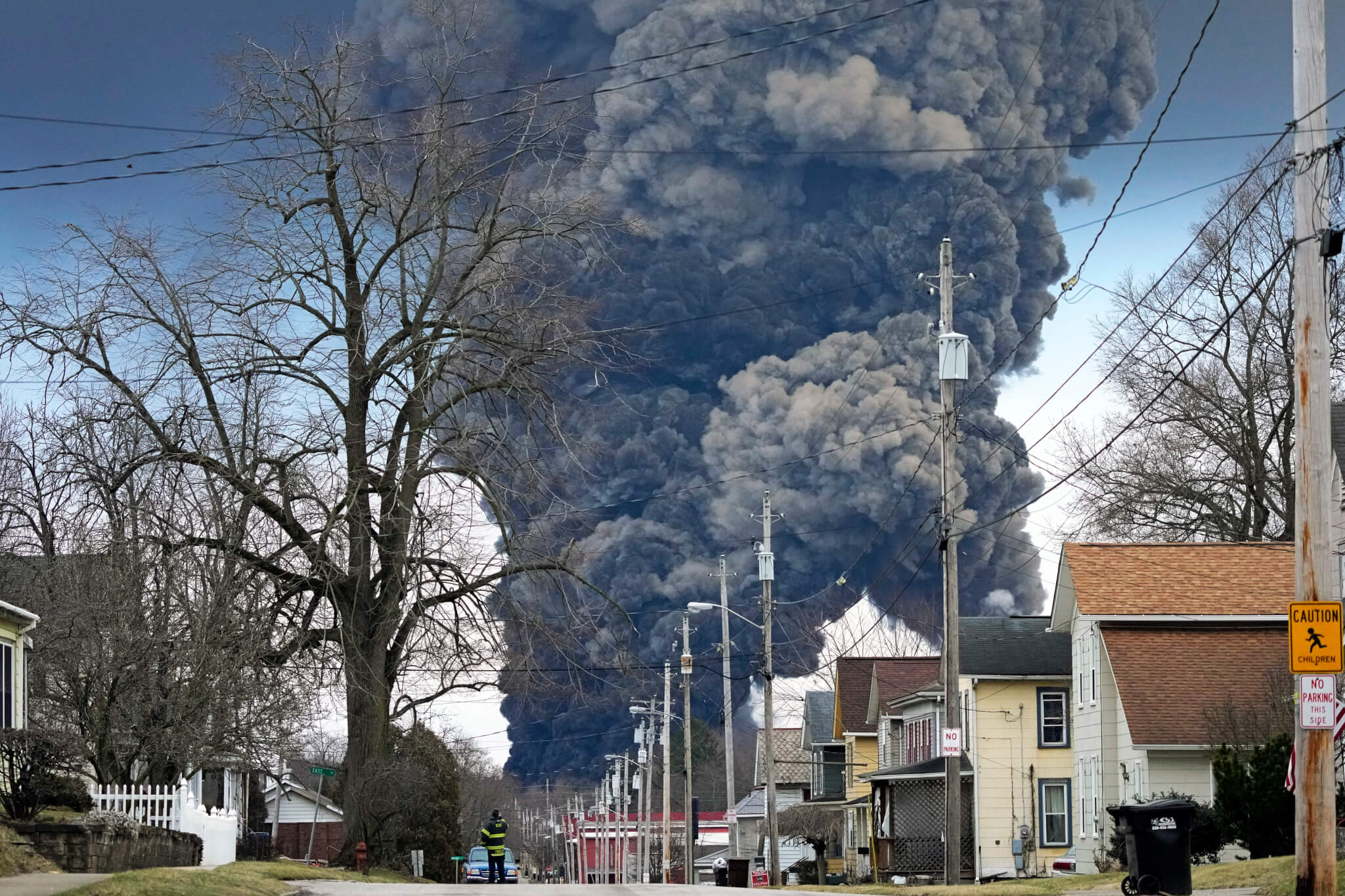
The Heller Dam in Lycoming County, seen in this September 2019 file photo, is almost 50 years old and is deemed a high hazard dam. It stores drinking water for over 50,000 people and more than 2,600 residents would be at risk if it ever failed. (Mark Nance/Sun-Gazette via AP)
Works Progress Administration-era structures are susceptible to more extreme weather as a nation debates what to invest in itself.
Pennsylvania has almost 3,400 reasons to make a serious investment in infrastructure, but most people don’t even think about them until something goes wrong.
The PA Department of Environmental Protection Division of Dam Safety has around 3,380 dams in its database, of which 744 (22%) are considered high-hazard, meaning that if they fail the result could be significant property damage and loss of life.
In November 2019, an Associated Press investigation showed 1,688 high-hazard dams in 44 states and Puerto Rico were in poor or unsatisfactory condition; 145 were in Pennsylvania.
The 145 high-risk dams are found in 42 of the state’s 67 counties, and on average they were built in the mid-1920s. About half are privately owned, including by businesses, while county, state, and local governments own the rest.
Despite the age of Pennsylvania’s dams, not much has changed in terms of dam inspection and maintenance.
“Our infrastructure in Pennsylvania is old — we’re an old state,” said Rich Reisinger, chief of the Dam Safety Division for the state. “A lot of dams have been around a long time, and occasionally the public gets, I’ll say, not as vigilant as we should be, when they say, ‘The dam’s been there 100 years. It’ll be there 100 more.’”
That seems to be what’s happened all across Pennsylvania. More than half of the dams are over 50 years old and most are privately owned. Some were even built in the early 19th century.
So many of them are well beyond their service life.
Overall, the American Society of Civil Engineers rated Pennsylvania’s dams a C; nationwide, that grade is a D. President Joe Biden’s American Jobs Plan includes $50 billion for upgrading infrastructure, including dams, to be more resilient in the face of climate change.
What Happens When Dams Fail?
Depending on where a dam is, its failure can be catastrophic.
Many Pennsylvanians have heard of the 1889 Johnstown flood that killed 2,200 people. The disaster was blamed on poor maintenance of the South Fork Dam on the Little Conemaugh River, which sent a 36-foot wall of water roaring into a populated area at 40 mph.
Another flood 22 years later, caused by the 1911 failure of the Austin Dam in Potter County, wiped out a paper mill and killed 78 people. The state’s first dam safety legislation followed soon after, and lawmakers returned to the topic after the Laurel Run Dam outside Johnstown failed in 1977.
Efforts to Keep Pennsylvania Dams from Failing
Pennsylvania’s dam safety program has a budget that increased from $2.6 million in 2010 — the third most in the country — to $2.8 million in 2018, the second-most. It has 28 dam-safety personnel, down slightly from 30 a decade ago.
Under a decade-old program known as H2O PA, the state has issued 19 grants to shore up high-hazard dams, funding projects valued at a total of $50 million.
In September 2019, the Federal Emergency Management Agency provided a grant of $177,000 for the Heller Dam, which helps store drinking water for about over 50,000 people in Lycoming County. The Williamsport Municipal Water Authority used that money to fund engineering work for a project, likely to cost $1 million or more, to repair spillway walls and install groundwater monitoring devices. About 2,600 people in South Williamsport and a neighboring township would be at risk if the 44-year-old Heller Dam ever failed.
High-hazard dams must be inspected annually by a registered professional engineer. Dam owners are also required to inspect their dam(s) at least once every three months.
Future Dangers to Pennsylvania Dams
While regular inspection and maintenance can extend a dam’s lifespan, climate change’s impact on weather patterns makes it harder to predict what conditions dams will have to withstand.
Warming temperatures cause more water to evaporate into the atmosphere causing the eventual rainfall to be much heavier. It also causes storms to move more slowly, so heavy precipitation is concentrated in a smaller area, increasing the risk of flooding and dam failure.
Politics

How Project 2025 aims to ban abortion in Pennsylvania
Former president Donald Trump said abortion was a state’s rights issue recently, but conservative organizations, under the banner “Project 2025,”...

736,000 PA households could lose crucial help on their internet bills
Time is running out for the Affordable Connectivity Program, which provides low-cost high speed internet access for over 736,000 Pennsylvania...

What to know about Trump’s legal issues
Over the past year, former president Donald Trump has become the center of not one, not two, not three, but four criminal investigations, at both...
Local News

Conjoined twins from Berks County die at age 62
Conjoined twins Lori and George Schappell, who pursued separate careers, interests and relationships during lives that defied medical expectations,...

Railroad agrees to $600 million settlement for fiery Ohio derailment, residents fear it’s not enough
Norfolk Southern has agreed to pay $600 million in a class-action lawsuit settlement for a fiery train derailment in February 2023 in eastern Ohio,...






